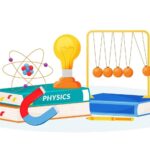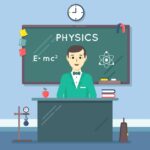Any measurement made using a tool is merely an estimate. The two measures may not be exactly the same if you take two measurements of the same thing. An error is a discrepancy between two measurements. You can effortlessly comprehend physics theories and practicals with the aid of IB physics hl tutors.
The IB Physics subtopics for uncertainties and errors are discussed below.
Percentage Uncertainty
Calculating a measurement’s uncertainty in relation to the measurement’s size is done using the relative uncertainty or relative error formula. It is determined by
Relative uncertainty = absolute error / measured value
“Percent uncertainty”
“Percent uncertainty” is a percentage-based indicator of how uncertain a measurement is in relation to its size. The computation is created by multiplying the overall value of the measurement by 100 and dividing the experiment’s uncertainty by that number.
Simply multiplying the relative uncertainty by 100 results in this. Since it is a ratio of related values, the percent uncertainty also lacks units.
Percentage Uncertainty = (Absolute Uncertainty/Mean Value) x 100
Combining Uncertainties
The square root of the linear sum of the squared standard uncertainty components is known as combined uncertainty. The term “Summation in Quadrature” or “Root Sum of the Squares” are other names for this technique. Each component is created by multiplying the standard uncertainty by the sensitivity coefficient that goes along with it.
Combining uncertainty is the process of determining the overall magnitude of uncertainty from a collection of individual uncertainty components, each with a range of magnitudes.
Error bars, line of best fit and line of worst fit
An error bar on a graph can be used to display the degree of measurement uncertainty. This bar, which is shown above and below the point, displays the measurement’s level of uncertainty. To display the whole uncertainty of the numbers presented, error bars are plotted on graphs. Error bars can be shown either horizontally for x-values or vertically for y-values in most cases.
Two lines of best fit should be created on the graph in order to determine the uncertainty in a gradient. The best line of fit, passing as near as feasible to the points. The line of best fit is the “worst” fit—either the steepest or the shallowest line that can fit inside all the error bars.
Applications & skills
- Use SI units in the proper format for all measurements, calculations, and the presentation of unprocessed and processed data.
- Quoting and comparing proportions, figures, and estimates to the closest degree
- Quantity estimation with a suitable number of significant figures
- Describing the detection and reduction of random and systematic mistakes
- Spreading uncertainty through addition, subtraction, multiplication, division, and raising to power computations
- Finding the gradient and intercept uncertainty
- Random & systematic errors
Random Error
Random mistakes are unpredictably occurring problems in an experiment. Even after the systematic mistake has been eliminated, this kind of error still exists in the experiment. The extent of the inaccuracy varies from reading to reading. Both directions are affected by inconsistent random mistakes.
Systematic Error
Systematic error is the ongoing error that arises in an experiment as a result of flaws in the apparatus’s mechanical design. The device’s faulty calibration is the cause of the systematic inaccuracies.
Any disruptions in the environment, such as changes in temperature or pressure, or incorrect readings from the observer, might create random errors.
Conclusion
The subtopics for uncertainties and errors in IB Physics are covered above. On a graph, the measurement uncertainty can be shown by an error bar. The “worst” fit—either the steepest or shallowest line that can fit inside all the error bars—is the line of best fit.
Random errors could be caused by any environmental disturbances, such as variations in temperature or pressure, or by inaccurate readings from the observer. Look for the best and most professional IB physics hl tutors to enhance your knowledge and clear all problems and doubts easily.





